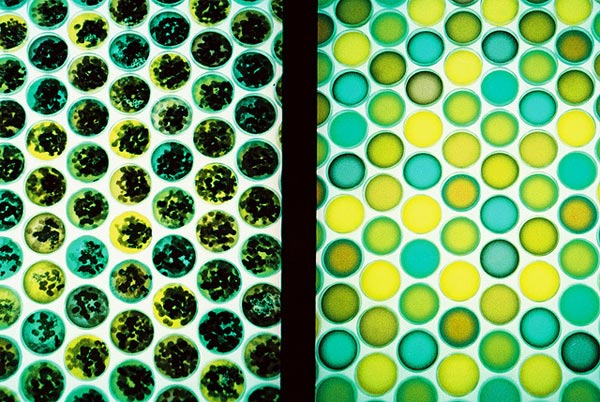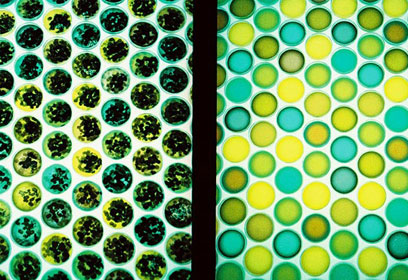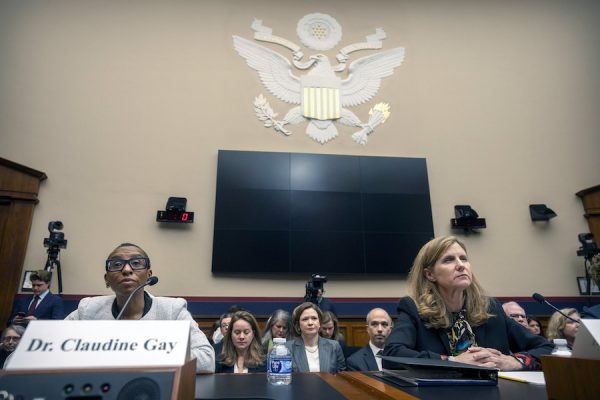
Polio ravaged much of the United States during the 20th century, leaving thousands sick, paralyzed, and dead. Those who were not afflicted with the virus were constantly haunted by the terror that their loved ones—particularly children, who were most vulnerable—would awaken one morning unable to walk and destined to a life of leg braces and iron lungs. That is until 1953, when Jonas Salk created a vaccine. There were more than 45,000 total cases of polio in the United States in each of the two years before the vaccine became broadly available. By 1962 there were only 910. Salk’s invention was one of the greatest successes in the history of American public health.
Amidst the adulation and fame that came with saving untold numbers of lives, Salk did something that seems curious if not unwise by today’s standards: he refused to patent the vaccine. During a 1955 interview, Edward R. Murrow asked Salk who owned the patent, leading a seemingly bewildered Salk to respond, “The people, I would say. There is no patent. Could you patent the sun?”
These days, amid a patent-driven biotech boom, it is difficult to imagine a researcher making a similar appeal to the commons. But this sensibility received a crucial endorsement in the Supreme Court’s recent decision in Association for Molecular Pathology v. Myriad Genetics. The Court held that Myriad, a biotech firm in Utah, could not patent naturally occurring objects such as the two cancer-related human genes in question.
The decision upended many aspects of American intellectual property law that emerged in the wake of Diamond v. Chakrabarty (1980), when the Court held that living organisms—specifically, manmade crude–oil bacteria—are patentable subject matter. Chakrabarty inspired a rush to patent not just living things but also a growing array of biological materials, including human genes.
Discovering, isolating, or excising parts of human bodies should not grant scientists property interests that they can exploit for financial benefit.
Fast-forward a few decades and almost one-fourth of all human genes had been patented and controlled by private hands. This made it expensive for scientists to do research implicating these genes or to develop tests that examine how certain mutations might affect health outcomes. Until Myriad the sensibility evoked by Salk—that entities beneficial to all humankind should not be patented and privatized—had largely been treated as a distant memory of a bygone era, like the jukebox or rotary telephone.
However, Justice Clarence Thomas eloquently set the record straight in his unanimous opinion for the Court in Myriad by contrasting the company’s patents to those upheld in Chakrabarty: “Myriad did not create anything. . . . It found an important and useful gene, but separating that gene from its surrounding genetic material is not an act of invention.” Now, many existing human gene patents are in question.
It is rare that a legal dispute of this importance, technical complexity, and jurisprudential nuance is resolved by the Court with such clarity, conviction, and common sense. Yet even after Myriad, the dispute over who can claim property interests in human biological materials, and in what circumstances, is far from over. Human gene patents are not the only means by which corporations and researchers assert rights to parts of human bodies, and many more legal reforms are needed to ensure that your body remains entirely yours.
• • •
An important example of this can be seen in the litigation surrounding John Moore’s spleen. Moore was a Seattle businessman who suffered from hairy cell leukemia, a rare cancer that caused his spleen to grow to fourteen times its normal size. Moore first traveled to UCLA Medical Center in 1976 for treatment, where Dr. David Golde told him that he should have his spleen removed. Moore complied and returned to UCLA for follow-up examinations with Golde for several years after the surgery. During the visits he routinely gave blood, skin, and other biological materials. Moore was told that these return visits and sample withdrawals were a necessary part of his ongoing treatment. What he was not told, however, was that Golde and the university were cashing in.
Researchers quickly realized that Moore’s cells were unique. The scientists took portions of Moore’s spleen to distill a specialized cell line—affectionately called “Mo”—and found that the cells could be useful in treating various diseases. Golde, researcher Shirley Quan, and UCLA were assigned a patent for the cell line in 1984. At the time, analysts estimated that the market for treatments stemming from Moore’s spleen was worth roughly $3 billion. Golde worked with a private company and received stock options worth millions, and UCLA also received hundreds of thousands of dollars in outside funding. Moore, whose spleen made all of this possible, received no compensation.
Moore sued the researchers and UCLA, claiming not only that they deceived him for their own financial benefit, but also that he was entitled to a portion of the revenues stemming from the Mo cell line because his property—his spleen and other biological materials—was taken from him and commercialized without his consent. In 1990 the California Supreme Court found that Golde and UCLA did not fulfill their disclosure obligations. Yet Moore was not owed a penny since the Court found that he no longer had a property interest in his own spleen once it was removed and used for research.
Moore v. Regents of the University of California enshrined a principle in property law that haunts us to this day: patients have virtually no property interest in most of the non-reproductive cells or tissues taken from them, even when these materials turn out to be profitable to researchers and institutions. This conclusion by the California Supreme Court has been followed by almost every jurisdiction.
Although the U.S. Supreme Court denied an appeal to review Moore in 1991, it may be time to revisit this holding in light of the underlying sentiment embraced in Myriad, i.e. that discovering, isolating, or excising parts of human bodies should not grant scientists property interests that they can exploit for financial benefit. Each time we visit the doctor and undergo a medical treatment that involves a tissue biopsy, we contribute to the more than 270 million human tissue samples held in research biobanks. Patients—the donors of this raw material—not only lack any say over how their tissues are used, but they also are not compensated if their materials lead to profitable innovations that would not have been possible but for their contribution.
Most of us unknowingly turn over this property interest in our own bodily materials as part of the terms and conditions of receiving medical treatment. The release is in black and white on one of the many boilerplate forms that we often read and sign in a doctor’s office with the same inattention we reserve for the latest end user license agreement from iTunes or Microsoft Office. But Moore v. Regents of the University of California is what legitimizes this default transaction. It is thus worthy of reconsideration if the Supreme Court’s rejection of privatizing human genes in Myriad is to take hold as a broader principle for how we should think about third-party property interests in human body parts. Rather than pretend that patients seeking medical attention are in a position to negotiate the transference of property interest in their excised tissues, we ought to have a series of default rules and practices that treat patients equitably and as true partners in research endeavors whenever possible.
Some have questioned, with less than convincing evidence, the sincerity of Salk’s statement against patents by claiming that his vaccine was not patentable to begin with. These claims misunderstand Salk’s enduring legacy and miss the bigger point that he was trying to make. At its core, his response to Murrow was about much more than patents. It was about respecting our shared humanity by not reducing the profession of healing to a series of biomedical land grabs in which doctors and patients are pit against each other. Thankfully, the U.S. Supreme Court has taken one aspect of this issue off of the table by striking down human gene patents. Let’s hope that the holding in Moore v. Regents of the University of California is next in their crosshairs.
Photograph: James Butler








